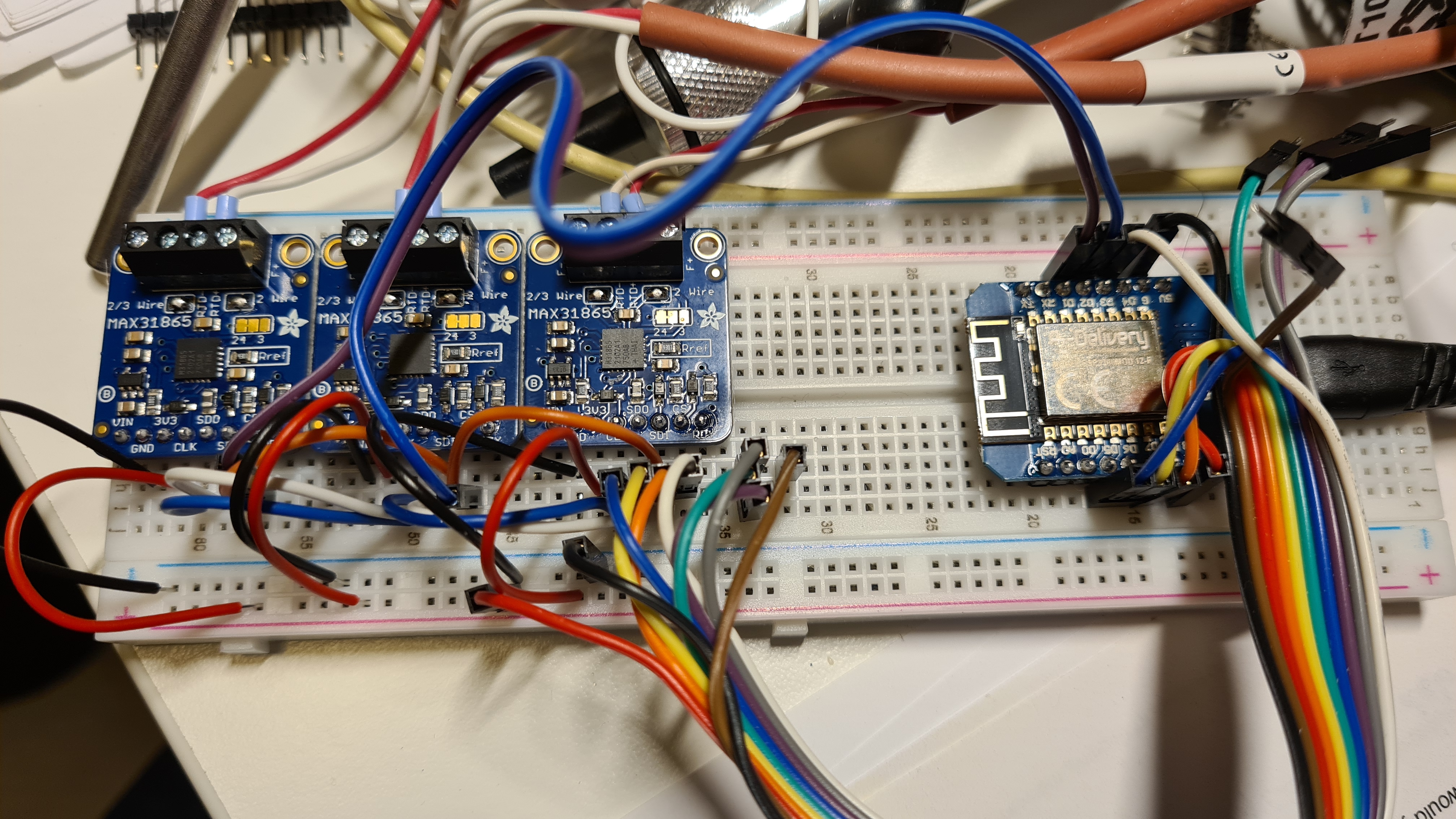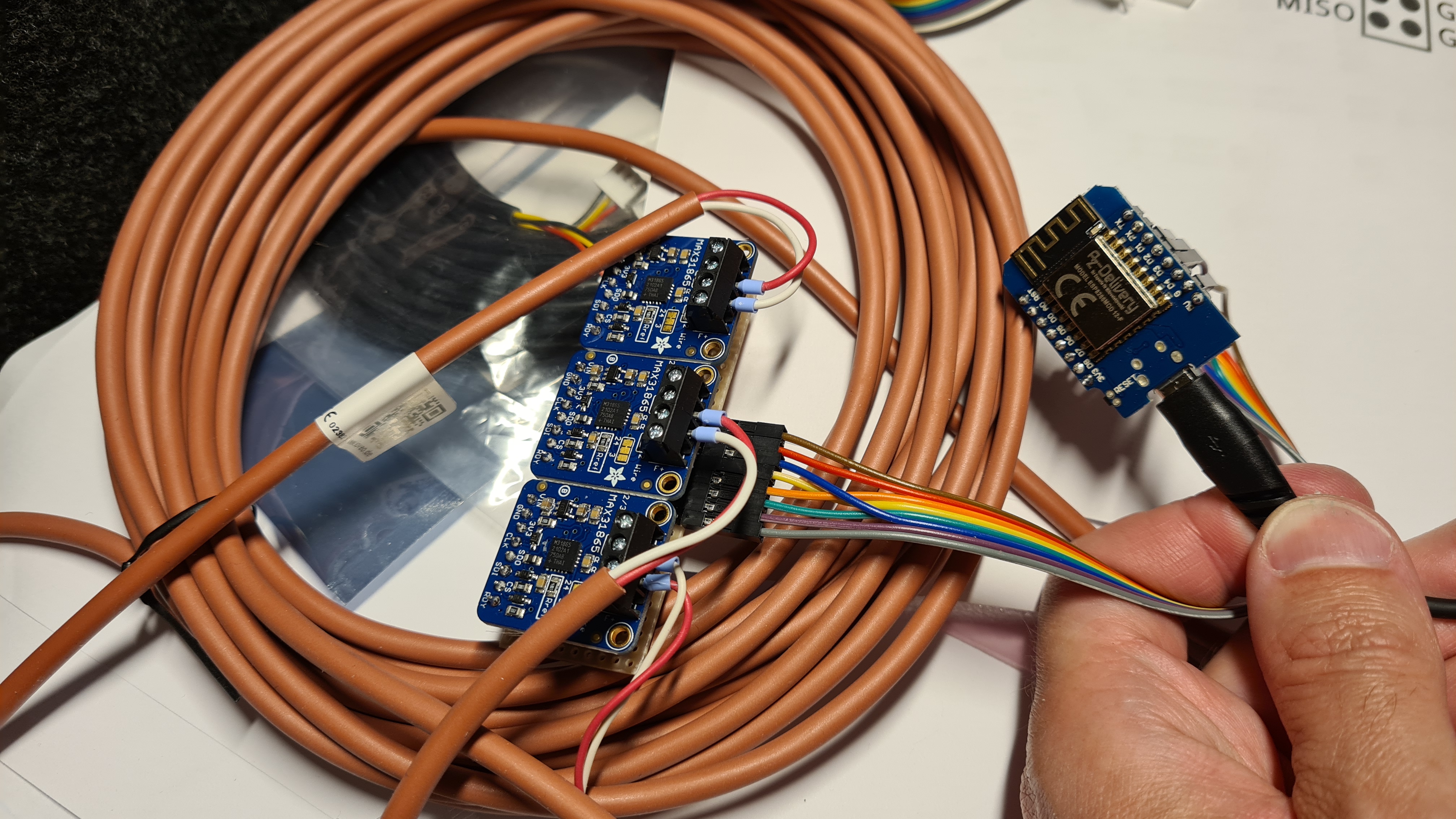I have 3 heatpipe solar panel each with 30 tubes.
They are connected in series - but as the sun moves over the sky, some of them may get into the shadow on the late afternoon.
As the controller temp-sensor is only mounted on the last - it sometimes results in that the pump stops - and will not start again even if the two others still has sun on them and gets really hot.
To improve this - I have now put PT100 sensors in each of the 3 modules, and hooked them up to a ESP 8266 board.
The ESP is programmed with ESPhome, where it makes the data available on the built in web-interface, Exposing to Prometheus as well as publishing the metrics to a MQTT but - that I then use to feed data the Solar controller module.
I did not want a fully wired solution as that can be sensitive to lightning, so just feeding low voltage power to the waterproof box I have outside - and letting it use the WiFi for data transfer works good.
Getting reliable high-res temp data from the PT1000 sensors was not that easy, especially as I had 3 of them.
Ended up with using PT1000 converters which gave me a very precise output digital signal that was easy to hook up to the ESP.
PT1000 sensors with Silicon cable to handle the heat. Normal cables may melt as it can get up to several hundred degrees.
As my original idea was to use a multiplexer and some high-res A/D converter I used the 2-wire probes, but as I later went with the adapter-boards that supports 4-wire, that would have been a better option - as it gives even more precise values.
- D1 Mini - ESP8266 12-F board
- Adafruit MAX31865 (PT1000 interface)
- PT1000 sensors with silicon cables (4-wire prefered)
I have some more images and a wiring diagram as well - somewhere. Ping me if you want it - and I'll dig it up.
Clone the repository and create a companion secrets.yaml file with the following fields:
wifi_ssid: <your wifi SSID>
wifi_password: <your wifi password>
solartemp_password: <Your p1mini password (for OTA, API, etc)>
Make sure to place the secrets.yaml file in the root path of the cloned project. The p1mini_password field can be set to any password before doing the initial upload of the firmware.
Flash ESPHome as usual, just keep the p1mini.h file in the same location as p1mini.yaml (and secrets.yaml). Don't connect USB and the P1 port at the same time! If everything works, Home Assistant will autodetect the new integration after you plug it into the P1 port.
If you do not receive any data, make sure that the P1 port is enabled on your meter and try setting the log level to DEBUG in ESPHome for more feedback.
Specification overview:

